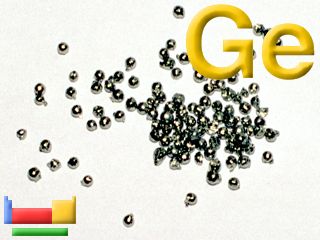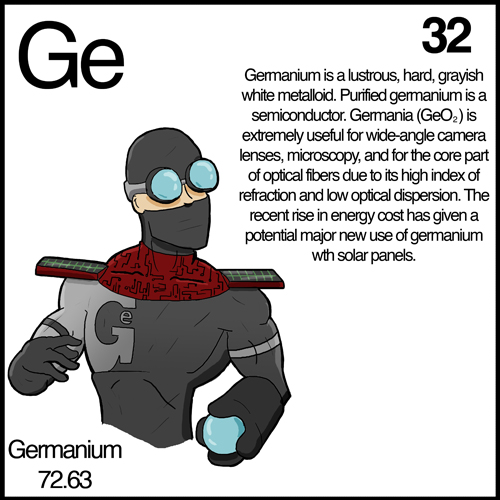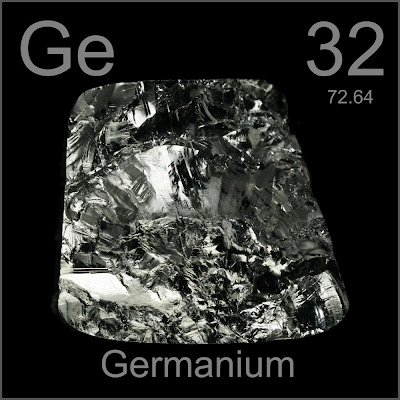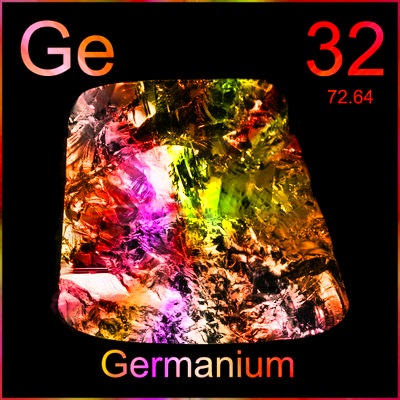Germanium
Janet Kuypers
from the “Periodic Table of Poetry” series
8/30/12
Because the planet Neptune
was recently discovered,
Winkler in the late 1800s
decided to name the element
he discovered “Neptunium,”
but another element already
tried to lay claim to that name
(and still a different element
got the name “Neptunium”)...
So Winkler decided to name
his newfound element Germanium,
from Latin Germania,
in honor of his homeland.
Germania is known for
its high refraction (along with
its low optical dispersion),
making it perfect for things like
wide-angle camera lenses,
but is also used for microscopy
and the core part of optical fibers.
And yeah, I could go on
about silicon-Germanium alloys
used for semiconductors
in new circuitry, fiber optics,
infrared optics, electronics,
metallurgy and chemotherapy,
but when I heard chemotherapy
I started looking into it, because
when it comes to chemotherapy,
Germanium’s role in cancer
treatments has been widely debated —
the American Cancer Society
found no evidence that Germanium
helps fight cancer, and the
U.S. Food and Drug Administration
found that when Germanium
was a nutritional supplement,
Germanium even actually “presents
potential human health hazard”.
#
And I’m sorry, when I hear “Germanium”,
I think “Germania”, and I know that
Germania was the Greek and Roman
geographic term for the region,
but it still makes me think
of the “World Capital Germania”, with
Adolf Hitler’s vision for the future
of Germany, with the projected renewal
of the German capital Berlin
during the Nazi reign. And Albert Speer,
the “first architect of the Third Reich”
(and probably the only architect)
produced many of the plans
for the rebuilt city, but only a fraction
was realized. The Berlin Olympic Stadium
for the 1936 Summer Olympics was built.
Speer also designed a new Chancellery,
with a hall twice as long as the Hall
of Mirrors in the Palace of Versailles,
but the second Chancellery
was destroyed by the Soviet army
in 1945, and almost no other buildings
planned for Berlin (and Hitler’s
“Germania”) were ever built.
#
Some compounds of Germanium
are highly reactive and very dangerous
to humans even on exposure.
I mean, Germanium had similarities
with the elements arsenic (used for
chemical weapons) and antimony
(another toxic chemical element),
so maybe it makes sense that I can’t help
but equate it with Hitler’s plans
that followed mass genocide.
So I have to keep reminding myself
of the uses for Germanium in electronics,
and remind myself that the most notable
physical characteristics of Germanium
make it perfect for optics, and things
like wide-angle camera lenses (which the
photographer in me can’t help but love).
Because although Germanium can have
some very bad connections,
it can also do things to help us out
so much in our lives as well.
|

![]()

![]()
![]()
![]()
![]()
![]()
![]()
![]()
![]()
![]()
![]()
![]()

![]()
![]()

![]()
![]()

![]()
![]()

![]()
![]()
![]()
![]()
![]()
![]()
![]()












![]()

![]()





